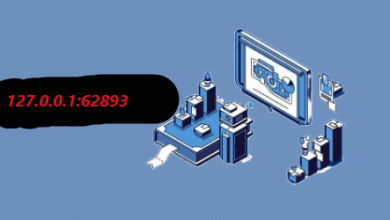Learn what Content Atomization is and how it can be used in your content strategy

Content Atomization is a way of working with content that has been very successful in the marketing world. How about understanding how content strategy can be used and what are its benefits for your business?
This is because, through this feature, it is possible to turn large content into small pills that are better targeted and with greater assertiveness.
This without even having to carry out new productions, apply efforts or make new investments in content creation.
Do you want to know how this is possible and how it can be applied in your internet marketing strategies? Follow the content we have prepared on the topic:
What is Content Atomization?
Content Atomization in free translation means Content Atomization. And this is a strategy focused on “breaking” long content into small strategic pieces.
This allows the content to reach different audiences and the strategy to gather as much information as possible in a segmented way with additional ideas.
By doing this, you optimize your team’s research and content creation time as much as possible. After all, if they are already working on the main post, adding the smaller segments at the same time is simpler, more practical and faster, because it is in the same line of reasoning.
What are the main benefits of Content Atomization?
Content Atomization is a strategy of fragmenting content and information, transforming large texts into small, dismembered parts. This makes each part of the overall content stand out, giving more importance to the details.
This makes your company’s content strategy more efficient, focusing on the important details of the content, generating more information and detail, attracting new leads and customers.
In addition, the content production itself is optimized, reusing all the work already done in many different ways. This can help immensely with small marketing teams.
Thus, Content Atomization makes you acquire the most information about each piece of general content, this makes you an expert on the subject, passing more credibility and gaining the trust of leads.
Speaking of credibility and trust, it’s fair to say that this content fragmentation attracts different types of audiences, as many leads are interested in separate pieces of content and are satisfied with your company’s content strategy thanks to Content Atomization.
How to implement Content Atomization in your content marketing
To implement this content strategy, it is essential to follow some steps and content production processes. The implementation itself is not difficult, but it is extremely necessary to plan and maintain an action strategy.
First, you need to define an overall theme for your content. This planning should be macro so that it is easy to break down the main topic into smaller subtopics later.
For the choice of the general theme, it is important that you know your audience and their respective interests. After all, the main topic must be interesting for your leads’ niche.
After choosing the general topic, you must separate it into subtopics and search for information about each of them. You can split your team in two: one collects information about the general topic, while the other takes care of information from subtopics, for example.
Of course it all depends on your content marketing , but this is one way to collect information effectively.
After having all the content and information in hand, it’s time to publish it all. In this first post, it is essential that the general theme is presented in a general way.
From there, each subtopic should be explained separately, with all the information collected appearing in the content.
And with text publications, your company can also reuse this information in videos, infographics, emails and podcasts or whatever communication channel is most interesting for your business.
Examples of content strategy
To talk about Content Atomization in the practice of content strategy, it is necessary to define in which channels it will be used.
podcasts
To use Content Atomization in your podcast, you must first choose a main topic for the episode, an overarching theme. Then, create subtopics that relate to the general theme, looking for information about each one.
Once that work is done, create other content that complements the podcast, such as videos, texts, etc. This grabs the attention of leads and adds value to the episode.
Once that’s done, just share everything on your favorite communication channel. Simple, isn’t it?
Measuring Content Atomization and Its Importance
With the fragmentation of your content marketing, measuring results becomes much easier. That’s because you can analyze which part of the content generated the most engagement and attention from leads.
This measurement increases the productivity of your content in the long term, as you know what brings engagement and new leads and what does not.
Content Atomization is a great digital solution for your content strategy
With Content Atomization, your company’s marketing fragments content information, generating more leads and relevance in the digital market!





